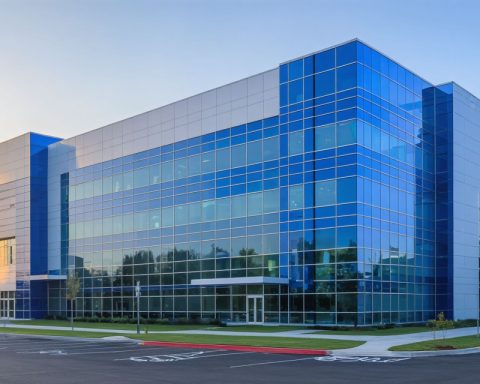Pioneering a Future Without Drivers
In a groundbreaking development, Uber is gearing up to make a considerable investment in Pony AI, a leader in autonomous vehicle technology, as the company prepares for its highly anticipated US initial public offering. The IPO, slated for next week, has generated significant buzz, especially given the increase in shares from 15 million to 20 million.
A Potential Shift in Strategy
Uber, based in San Francisco, has its sights set on acquiring more than $10 million in Pony AI’s newly issued stock, reflecting the ride-hailing giant’s growing interest in self-driving technologies. This strategic move is seen as a pathway to possible collaboration opportunities beyond the United States.
Behind Closed Doors
As talks continue, the exact figure for Uber’s investment remains uncertain. Although representatives from Uber remained tight-lipped, speculation mounts over the potential impact of such a partnership on the transportation landscape.
Self-Driving Alliances on the Rise
This latest undertaking follows Uber’s pattern of alliances with other autonomous tech pioneers, such as Waymo and Wayve Technologies. Additionally, Uber’s agreement with WeRide Inc. in Abu Dhabi underscores its commitment to innovating in the domain of driverless transportation.
The Road Ahead for Pony AI
Pony AI, established in 2016, operates a fleet of self-driving vehicles in both the US and China. The proceeds from their expanded IPO could generate up to $260 million, providing a significant boost as they aim to cement their position in the autonomous driving sector. With price brackets set between $11 to $13 per share, the stakes are high.
Unlocking the Future: Tips and Insights into Autonomous Vehicles
The world of autonomous vehicles is rapidly evolving, with companies like Uber and Pony AI at the forefront, pioneering advancements that promise to revolutionize transportation. As we venture further into this driverless future, it’s exciting to explore some tips, life hacks, and interesting facts about autonomous vehicles and their technological landscape.
Understanding Autonomous Vehicle Technology
The technology behind self-driving cars involves a complex interplay of sensors, cameras, radar, and software algorithms that enable vehicles to navigate and drive without human intervention. Some key components include:
– Lidar Systems: These sensors use laser light to map the environment in 3D, providing accurate detection of obstacles and surroundings.
– Artificial Intelligence (AI): AI is at the heart of autonomous driving, with machine learning algorithms learning from vast amounts of data to make split-second driving decisions.
– Connectivity: Many autonomous vehicles rely on cloud-based systems for real-time navigation updates and for sharing data with other cars and infrastructure.
Life Hacks for Staying Updated
Staying informed about autonomous vehicle developments can enhance your understanding and preparation for the changes they bring. Here are some life hacks:
– Follow Industry Leaders: Keep up with companies like Uber and Pony AI, as well as others like Google which are leading the charge with Waymo, to get firsthand news and updates.
– Tech Blogs and News Sites: Websites like TechCrunch and The Verge offer the latest updates and insights into tech advancements, including autonomous vehicles.
– Podcasts and Webinars: Engage with content from industry experts via podcasts and webinars focusing on transportation and AI developments.
Interesting Facts About Autonomous Vehicles
As we delve deeper into the world of autonomous vehicles, here are some fascinating facts:
– Levels of Autonomy: Vehicles are classified by levels of autonomy from 0 (no automation) to 5 (full automation). Most consumer vehicles available now are level 2, with features like adaptive cruise control.
– Safety Benefits: Autonomous vehicles have the potential to significantly reduce accidents caused by human error, as they are programmed for precision and are unaffected by distractions.
– Environmental Impact: Self-driving cars can contribute to greener cities, as they can be programmed to optimize routes, reducing traffic congestion and fuel consumption.
Preparing for the Autonomous Era
As companies like Uber and Pony AI push forward, it’s crucial to consider how these advancements will impact everyday life. Preparing for the future involves:
– Adapting to New Technologies: Embrace learning new systems and apps associated with autonomous travel.
– Exploring Shared Mobility: As ride-sharing options increase alongside self-driving cars, consider incorporating them into your daily routine to reduce car ownership burdens.
– Advocacy and Engagement: Participate in community discussions on the implications of autonomous vehicles, from ethical considerations to regulatory policies.
In conclusion, while the autonomous vehicle industry continues to grow and innovate, staying informed and adaptable is key to navigating this transformative journey. As Uber and Pony AI lead the charge, the future of driverless transportation looks promising and full of opportunities.












